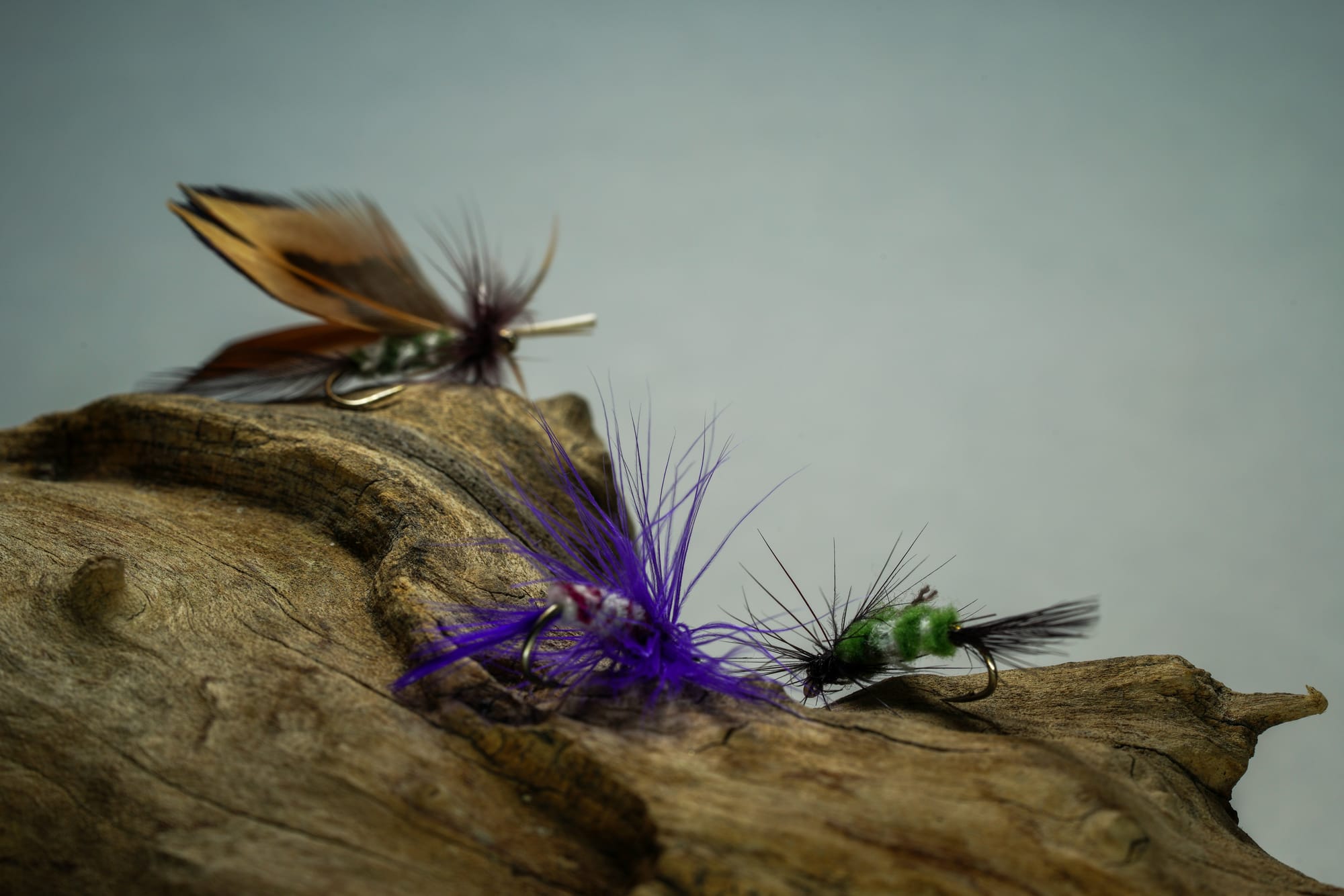Exploring the Allure of Vintage Flies

Top 10 Facts and Tips About Vintage Flies
Vintage flies have a timeless appeal among anglers and collectors alike. They are not just fishing tools but also handcrafted pieces of history, reflecting the skill, artistry, and traditions of fly tying. Whether you are an experienced angler, a collector, or a beginner curious about vintage flies, this list of tips and facts will help you better understand and appreciate these fascinating items.
1. What Are Vintage Flies?
Vintage flies are fishing flies that were made decades ago, often by skilled fly tyers using traditional materials and techniques. They date back to the late 19th and early 20th centuries, although some older examples may exist. These flies are valued for their craftsmanship and historical significance, as they represent an era when fly fishing was practiced in its most classic form.
2. Hand-Tied Craftsmanship
One of the most captivating aspects of vintage flies is their meticulous, hand-tied design. Unlike mass-produced flies, vintage flies were created by artisans who spent hours carefully tying each pattern. They used natural materials such as feathers, fur, silk, and gut to craft realistic and effective imitations of aquatic insects. Today, these hand-tied flies are considered small works of art.
3. The Historical Importance of Vintage Flies
Vintage flies offer glimpses into the history of fly fishing and the evolution of angling techniques. They tell stories of past waterways, fish species, and the materials fly tyers had access to at the time. Some vintage flies are tied in patterns that are now rare or obsolete, making them treasured artifacts for historians and enthusiasts.
4. Famous Vintage Fly Patterns
Several classic fly patterns have withstood the test of time and remain iconic examples of vintage flies. Here are a few noteworthy ones:
- Royal Coachman: A timeless dry fly pattern created in the 19th century, known for its bright, regal colors.
- Grey Ghost: A classic streamer fly designed by Carrie G. Stevens, popular for targeting trout and salmon.
- Blue Wing Olive: A historic wet fly pattern that imitates the olive-colored mayfly species.
- Black Gnat: One of the oldest and simplest patterns, effective for catching trout in calm waters.
Each of these patterns has unique characteristics that showcase the creativity and ingenuity of early fly tyers.
5. Collecting Vintage Flies
Vintage flies have become sought-after collectibles in the angling community. Collectors often look for fly boxes, original tyer signatures, and flies tied by famous names in the sport. If you are considering starting a collection, here are a few tips:
- Look for authentic flies tied by well-known fly tyers such as Mary Orvis Marbury or Helen Shaw.
- Seek flies tied with original materials, as their natural fibers add value.
- Invest in vintage fly boxes from reputable manufacturers like Hardy or Wheatley.
- Research auction houses and online forums for trustworthy sources to purchase vintage flies.
Owning a collection of vintage flies not only provides a sense of nostalgia but also connects you to the rich history of fly fishing.
6. Caring for Vintage Flies
Preserving vintage flies is crucial if you want to maintain their condition and value. Here are a few essential tips for proper care:
- Store vintage flies in a dry, cool place to avoid moisture damage or mold.
- Use acid-free paper or small cases to protect individual flies.
- Handle the flies carefully, avoiding direct contact with delicate feathers or fibers.
- Keep flies away from direct sunlight to prevent fading of their original colors.
- Consider displaying them in glass cases to showcase their beauty while protecting them from dust and accidental damage.
With proper care, vintage flies can be enjoyed by future generations.
7. Vintage Flies Remain Functional
Although many people collect vintage flies, some anglers still use them for fishing. While they may not be as durable as modern flies designed with synthetic materials, vintage flies can still be effective in catching fish. For those who wish to try fishing with vintage flies, it’s best to reserve them for special occasions or when fishing in calm, controlled waters where the risk of damage is low.
8. Tools and Materials Used in Vintage Fly Tying
Fly tyers in the past relied on tools that were simpler in design compared to today’s modern equipment. Some common tools included hand-forged hooks, vise-like clamps, and hand scissors. The materials were also more natural, such as feathers from exotic birds, fine silk threads, and waxed gut for the leaders. Today, many of these materials are considered unethical or difficult to source, adding to the allure of vintage flies.
9. Famous Fly Tying Books
Vintage fly tying techniques and patterns have been documented in many famous books over the years. Here are a few seminal works:
- “Favorite Flies and Their Histories” by Mary Orvis Marbury: This book covers historical fly patterns and their origins, written by one of the most influential figures in early fly fishing.
- “The Art of Tying the Wet Fly” by James E. Leisenring: A guide focusing on the finer points of wet fly tying and fishing.
- “Streamers and Bucktails” by Joseph D. Bates: A comprehensive look at classic streamer patterns and techniques.
These books remain highly regarded resources for anyone looking to dive into the history of vintage fly tying.
10. Appreciating the Artistry in Vintage Flies
Beyond their utility, vintage flies are admired for their artistic and aesthetic qualities. Classic patterns often incorporated vibrant colors, intricate designs, and symmetrical proportions. Fly tyers of the past were craftsmen who took pride in crafting not only effective flies but also visually stunning ones. Today, vintage flies are often displayed as decorative pieces in homes, offices, or angling lodges, serving as tributes to their creators’ artistry.
Conclusion
Vintage flies are much more than fishing lures—they are windows into the history, art, and culture of fly fishing. Whether you are passionate about collecting, fishing, or simply admiring their beauty, vintage flies offer something for everyone. By learning more about their history, exploring famous patterns, and understanding how to care for them, you can deepen your appreciation for these incredible artifacts.
So, the next time you come across a vintage fly, take a moment to admire its craftsmanship and think about the stories it carries. Whether you display it in your collection or attach it to your line for a day on the water, a vintage fly will always be a reminder of the enduring charm of fly fishing.


